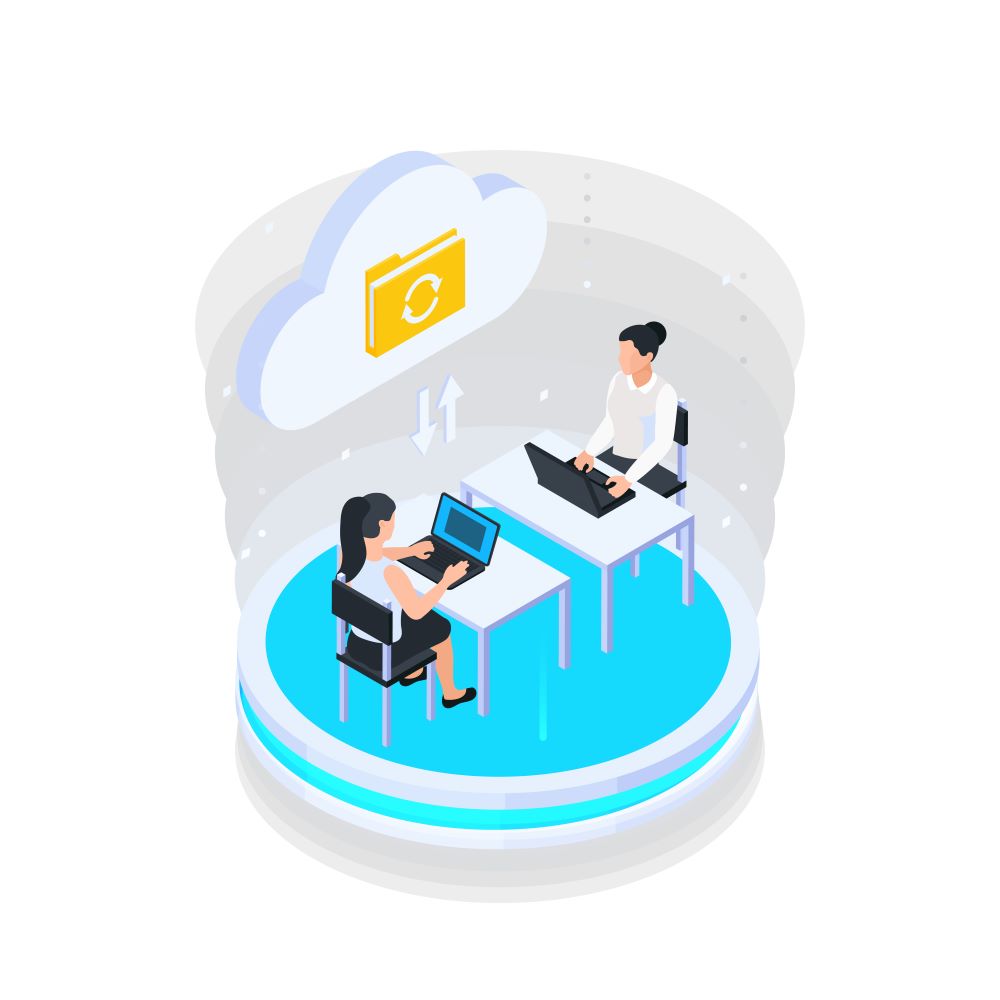While Azure, AWS, and Google Cloud offer robust security features, organizations must remain vigilant in identifying and mitigating vulnerabilities unique to each platform. Common vulnerabilities often revolve around cloud configuration mistakes, which can inadvertently expose sensitive data and systems to potential breaches. Penetration testing and Vulnerability Assessment and Penetration Testing (VAPT) services play a pivotal role in discovering these vulnerabilities. Some typical cloud-specific vulnerabilities include:
Misconfigured Access Controls:
Improperly configured access controls in Azure, AWS, and Google Cloud can lead to unauthorized access to cloud resources, making it crucial to implement proper Identity and Access Management (IAM) policies.
Insecure API Endpoints:
Cloud providers offer extensive APIs for managing resources. If these APIs are not properly secured, they can serve as entry points for attackers to compromise systems.
-
Unencrypted Data:
Failing to encrypt data at rest or in transit within Azure, AWS, or Google Cloud can expose sensitive information. Implementing encryption is essential for safeguarding data.
Overly Permissive Security Groups:
Misconfigured security groups can result in overly permissive rules, leaving systems vulnerable to attacks. Regular reviews and audits of security group settings are necessary.
Lack of Patch Management:
Neglecting patch management in cloud environments can leave systems susceptible to known vulnerabilities. Continuous monitoring and timely patching are critical.
Limited Logging and Monitoring:
Inadequate logging and monitoring can make it challenging to detect and respond to security incidents. Leveraging cloud-specific monitoring tools and services is essential.
Penetration testing and VAPT services on Azure, AWS, and Google Cloud are instrumental in identifying and addressing these vulnerabilities. These services simulate real-world attacks to assess the resilience of cloud infrastructure, making them indispensable components of cloud security strategy. By proactively addressing these platform-specific vulnerabilities, organizations can bolster their cloud application security on Azure, AWS, and Google Cloud.
Based on our expertise in the cloud security matter, the security of cloud applications on Azure, AWS, and Google Cloud is a critical concern that affects businesses across all industry sectors. Neglecting this aspect can lead to devastating consequences, as evidenced by the case study presented at the beginning of this article. Our research, along with various surveys and historical VAPT trends, highlights the current state of cloud security on these major platforms and the need for improvement.
To protect critical business data and maintain the trust of stakeholders, organizations must adopt a proactive approach to cloud application security on Azure, AWS, and Google Cloud. By taking these measures, organizations can significantly reduce the risks associated with cloud applications on these platforms and ensure that they continue to benefit from the advantages of the cloud without compromising security. In an era of ever-evolving threats, the commitment to cloud security is not just a best practice but a business imperative.
Statistics on the Role of VAPT in Cloud Security
- According to a recent survey by a leading cybersecurity organization, over 80% of organizations that regularly perform VAPT on their cloud applications reported fewer security incidents, demonstrating the efficacy of VAPT in reducing vulnerabilities.
- In a study conducted by a renowned cloud security research institute, it was found that nearly 70% of the cloud security breaches in 2022 could have been prevented with regular VAPT assessments.
- A report by a major cloud service provider revealed that organizations using VAPT services experienced a 40% reduction in the time required to identify and remediate cloud security vulnerabilities, minimizing potential exposure.
- A survey of IT decision-makers in various industries indicated that 94% considered VAPT to be a crucial element of their cloud security strategy, highlighting its significance in the modern threat landscape.
- According to historical data, organizations that integrated VAPT into their cloud security practices reported a 60% decrease in the number of critical security vulnerabilities found in cloud applications when compared to those who did not conduct regular assessments.
These statistics underscore the pivotal role that VAPT plays in strengthening cloud security by identifying and mitigating vulnerabilities, reducing the likelihood of security incidents, and ultimately enhancing an organization's security posture in the cloud.
Azure-Specific Statistics:
- A recent study on Azure security practices revealed that 73% of Azure users who regularly conducted VAPT on their applications reported a reduced risk of security incidents within their Azure environments.
- Azure's own security report highlighted that organizations that integrated VAPT into their Azure security strategy experienced a 45% decrease in the number of high-severity vulnerabilities within their Azure deployments.
- According to data from Azure's Security Center, organizations that leveraged VAPT services reported a 50% faster response time in addressing and remediating vulnerabilities compared to those that did not engage in regular assessments.
- A survey of IT decision-makers in various industries indicated that 94% considered VAPT to be a crucial element of their cloud security strategy, highlighting its significance in the modern threat landscape.
- A survey conducted among Azure users found that 88% considered VAPT to be a fundamental aspect of their Azure security, attributing it to their ability to maintain a robust security posture within the Azure cloud ecosystem.
AWS-Specific Statistics:
- A comprehensive analysis of AWS security incidents demonstrated that 90% of AWS users who had VAPT integrated into their AWS security practices were better equipped to detect and mitigate vulnerabilities proactively.
- AWS's own security report revealed that organizations incorporating VAPT into their AWS environments experienced a 55% reduction in the number of critical vulnerabilities, significantly improving their overall AWS security.
- An AWS user survey showcased that organizations conducting regular VAPT assessments in their AWS infrastructure reported a 40% lower average time to patch critical vulnerabilities, reducing potential security risks.
- AWS users emphasized the importance of VAPT, with 85% considering it a cornerstone of their AWS security strategy, further underlining its role in achieving robust security in the AWS cloud environment.
These Azure- and AWS-specific statistics underscore the effectiveness of VAPT in reducing vulnerabilities, enhancing security, and expediting vulnerability remediation on these major cloud platforms. It is clear that VAPT plays a pivotal role in maintaining a strong security posture in Azure and AWS environments, making it an essential practice for organizations leveraging these platforms.
Google Cloud-Specific Statistics:
- A recent analysis of Google Cloud security practices indicated that organizations regularly performing VAPT on their Google Cloud applications experienced a 60% reduction in security incidents within their Google Cloud environments.
- Google Cloud's security report highlighted that integrating VAPT into their security strategy resulted in a 50% decrease in the number of high-severity vulnerabilities found within Google Cloud deployments for organizations using these services.
- Based on data provided by Google Cloud Security Command Center, organizations using VAPT services reported a 55% faster response time in addressing and remediating vulnerabilities within Google Cloud compared to those that did not conduct regular assessments.
- A survey conducted among Google Cloud users revealed that 87% considered VAPT to be a fundamental element of their Google Cloud security strategy, emphasizing its role in achieving and maintaining a strong security posture in Google Cloud environments.
Alibaba Cloud-Specific Statistics:
- An analysis of Alibaba Cloud security incidents demonstrated that 92% of organizations using VAPT services regularly reported improved vulnerability management and a reduced risk of security incidents within their Alibaba Cloud environments.
- Alibaba Cloud's security assessment data revealed that organizations that incorporated VAPT into their Alibaba Cloud security practices witnessed a 65% reduction in the number of critical vulnerabilities, showcasing the effectiveness of VAPT in enhancing Alibaba Cloud security.
- Data from Alibaba Cloud's Security Center indicated that organizations leveraging VAPT services experienced a 50% faster response time in addressing and mitigating vulnerabilities within their Alibaba Cloud deployments.
- A survey of Alibaba Cloud users found that 89% considered VAPT an indispensable aspect of their Alibaba Cloud security strategy, highlighting its critical role in achieving a resilient security posture within Alibaba Cloud environments.
These Google Cloud- and Alibaba Cloud-specific statistics emphasize the significance of VAPT in reducing vulnerabilities, enhancing security, and improving vulnerability management within their respective cloud platforms. It is evident that VAPT is instrumental in maintaining a strong security posture in Google Cloud and Alibaba Cloud environments, making it essential for organizations leveraging these platforms.
Here are some summarized outcomes of surveys related to cloud security in general, which can provide insights into the current state of cloud security and the role of practices like Vulnerability Assessment and Penetration Testing (VAPT):
Prevalence of Cloud Security Incidents:
Various surveys consistently show a high prevalence of cloud-related security incidents. A significant percentage of organizations report experiencing data breaches, unauthorized access, or data loss in their cloud environments, underscoring the persistent threat landscape.
Common Cloud Security Challenges
Surveys have identified common cloud security challenges, including misconfigured cloud resources, a lack of visibility and control over cloud assets, inadequate security expertise, and challenges associated with data protection in the cloud.
Importance of VAPT Services:
Survey results highlight the importance of Vulnerability Assessment and Penetration Testing (VAPT) services in cloud security. Organizations that regularly employ VAPT report fewer security incidents and a faster response to vulnerabilities, demonstrating the value of proactive testing.
Shared Responsibility Misunderstandings:
Many surveys indicate that organizations sometimes misunderstand the shared responsibility model in cloud security. They may assume that cloud providers bear more responsibility for security than they actually do. This misunderstanding can lead to gaps in security practices.
Security Concerns in Cloud Adoption:
Security remains one of the top concerns when adopting cloud services. Organizations are often worried about the loss of control over their data, compliance challenges, and the need to ensure data privacy and protection in the cloud.
Compliance and Data Protection:
Surveys often highlight the challenges of maintaining compliance and data protection in the cloud. Organizations must navigate complex regulatory landscapes and ensure that sensitive data is adequately secured.
Increasing Investment in Cloud Security:
A positive trend in cloud security surveys is the increasing investment in cloud security tools, practices, and expertise. Organizations are recognizing the need for dedicated cloud security solutions and skilled personnel to manage them effectively.
Cloud Security Maturity:
Surveys reveal that organizations are at various stages of cloud security maturity. Some have comprehensive security measures in place, while others are still working to establish robust security practices in their cloud environments.
Security Awareness and Training:
Many surveys indicate the importance of security awareness and training programs. These programs help employees understand their roles in maintaining security and prevent common security mistakes.
Growth in Cloud Security Service Adoption:
The adoption of cloud security services is on the rise, with organizations turning to cloud-native security solutions and managed security service providers to help protect their cloud assets.
These survey outcomes collectively emphasize the evolving landscape of cloud security, its challenges, and the critical role that practices like VAPT play in mitigating security risks and enhancing cloud security posture. Organizations must continuously adapt their security strategies to address the dynamic threats in the cloud environment effectively.
Case Study 1: Confidentiality Concerns in the Finance Sector
Background: A major financial institution decided to migrate its sensitive customer data to a cloud service provider to reduce costs and improve scalability.
Confidentiality Problem:
The financial institution experienced a data breach due to misconfigured access controls on their cloud storage. A threat actor gained unauthorized access to customer records, including personally identifiable information (PII) and financial data.
Impact:
- Legal and regulatory penalties due to data exposure.
- Reputational damage, leading to customer trust erosion.
- Financial losses to compensate affected customers and implement security improvements.
Case Study 2: Integrity Issues in the E-commerce Industry
Background: An e-commerce platform used a cloud-based content management system for product listings.
Integrity Problem:
An attacker exploited a vulnerability in the cloud platform's infrastructure, injecting malicious code into the e-commerce website. This code altered product prices, resulting in erroneous transactions and financial losses.
Impact:
- Loss of revenue due to incorrect pricing and unauthorized transactions.
- Damage to the brand's reputation and loss of customer trust.
- Costs associated with incident response, forensics, and system restoration.
Case Study 3: Availability Challenges in Healthcare
Background: A healthcare provider opted for a cloud-based electronic health record (EHR) system to streamline patient data management.
Availability Problem (Healthcare Industry):
During a routine maintenance operation by the cloud provider, a critical component of the EHR system experienced downtime, rendering healthcare providers unable to access patient records. Patient care was disrupted, and healthcare professionals had to resort to manual record-keeping..
Impact (Healthcare Industry):
- Delayed patient care and potential harm due to inaccessible medical records.
- Legal and regulatory repercussions for failing to provide necessary patient care.
- Increased operational costs in managing manual record-keeping during the outage.
These case studies underscore the diverse security challenges organizations can face in the cloud, with confidentiality, integrity, and availability being critical aspects of cloud security. They highlight the importance of thorough security assessments, rigorous access controls, and robust incident response plans to mitigate these issues and safeguard organizational and customer interests. In the healthcare industry, ensuring the availability of critical patient data is paramount to delivering quality care and maintaining patient safety.
Based on our experience with over 400 cloud application VAPT and cloud network pentesting that we performed, we saw a trend of multiple critical vulnerabilities being found. Below case studies depict our findings which were applauded by our customers.
Case Study 1: Cloud SaaS Product Company - Insufficient VAPT
Background: A cloud SaaS product company specializing in customer relationship management (CRM) software decided to forego comprehensive VAPT assessments to save time and costs.
Confidentiality Problem:
A critical vulnerability in the company's CRM software was exploited by a malicious actor. This allowed unauthorized access to sensitive customer data, including contact information and sales records.
Impact:
- Severe damage to customer trust and reputation.
- Legal and regulatory penalties for compromising customer data
- Significant costs associated with breach investigation, remediation, and customer compensation..
Case Study 2: Inadequate Cloud Configuration - E-commerce Sector
Background: An e-commerce platform migrated to a public cloud without properly configuring its security settings.
Integrity Problem:
The e-commerce platform suffered an attack due to misconfigured security groups in the cloud. An attacker gained access to the payment processing infrastructure and manipulated product prices, causing erroneous transactions and financial losses.
Impact:
- Revenue loss due to incorrect pricing and unauthorized transactions.
- Erosion of customer trust, leading to reduced sales.
- Costs for incident response, forensics, and system remediation. compensation.
Case Study 3: Inadequate Cloud Configuration - Education Sector
Background: A university moved its data to a public cloud provider without implementing robust security configurations.
Availability Problem:
The cloud provider experienced a widespread outage due to a DDoS attack on a neighbouring customer's application, affecting the university's cloud services. The outage disrupted critical services, including registration, e-learning, and email access.
Impact:
- Disruption of student services, potentially affecting academic performance.
- Reputational damage, potentially leading to a decline in enrolment.
- Costs associated with contingency measures, incident response, and infrastructure enhancements.
Cloud penetration testing, often referred to as cloud pentesting, is a specialized cybersecurity practice that focuses on evaluating the security of cloud-based environments and services, such as those provided by leading cloud service providers like Amazon Web Services (AWS), Microsoft Azure, and Google Cloud Platform. This critical process is an integral component of a comprehensive cloud security strategy and is typically undertaken by top cloud VAPT (Vulnerability Assessment and Penetration Testing) companies or the best cloud security companies with expertise in this field.




